We can help with the complete range of pests, see below for information about general pests we also target.
Black Ants
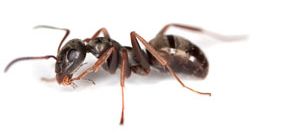 The Black Ants, as you have probably noticed, are like workaholics at a picnic. They have kings, queens and immature stages back in the nest. The ones you usually find foraging through your kitchen, garden and around your back door are the workers and maybe some soldiers.
The Black Ants, as you have probably noticed, are like workaholics at a picnic. They have kings, queens and immature stages back in the nest. The ones you usually find foraging through your kitchen, garden and around your back door are the workers and maybe some soldiers.
The Small Black and Brown Ants (up to about 5mm long) are the ants that usually develop large, hard to find colonies that are of most concern. Some ants have a painful sting, but mainly they are pests because so many of them turn up uninvited into your home.
Lawlors one-off treatment is effective and safe, and will give complete control for at least 12 months at low cost.
Call us now for a free quote on 8443 9636 or
Cockroaches
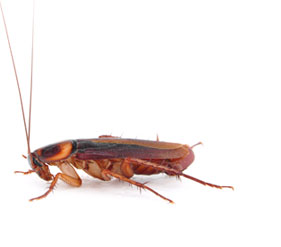 Cockroaches are nocturnal creatures and are seldom seen in any quantity during daylight hours, in areas of heavy infestations sightings of cockroaches may become more common. It is generally accepted that for every cockroach seen there are at least ten that are hidden away out of sight.
Cockroaches are nocturnal creatures and are seldom seen in any quantity during daylight hours, in areas of heavy infestations sightings of cockroaches may become more common. It is generally accepted that for every cockroach seen there are at least ten that are hidden away out of sight.
Cockroaches' harbourage areas include cracks, crevices, dishwashers, electrical motors and switches, ovens and almost any warm, moist areas where food is available. The German Cockroach is capable of producing 20,000 offspring within a twelve month period. Female cockroaches also have the ability to produce young without mating.
Infestations can occur when cockroaches are carried into the premises on raw materials or packaging, or gain entry through drain covers, ventilation openings and under doors. Control is achieved by a combination of good hygiene, plus insecticide gels, baits, residual sprays and dusts.The adult of this cockroach species is light tan to medium brown and measures approximately 10-15mm in length. Wings cover the entire abdomen and there are two dark parallel stripes on the pronotum behind the head. Distribution: Worldwide.
Call us now for a free quote on 8443 9636 or
Spiders
 Spiders have two body sections the Cephalothorax and the Abdomen, they have 4 pairs of legs, with no Antennae, they have no true Jaw, but fangs and chelicerae. The Life Cycle of a spider (most spinning web spiders) is less than 12 months, but some ground-dwelling spiders, i.e. funnel webs develop slowly and appear to have a lifecycle of many years.
Spiders have two body sections the Cephalothorax and the Abdomen, they have 4 pairs of legs, with no Antennae, they have no true Jaw, but fangs and chelicerae. The Life Cycle of a spider (most spinning web spiders) is less than 12 months, but some ground-dwelling spiders, i.e. funnel webs develop slowly and appear to have a lifecycle of many years.
Spiders food source is living on freshly killed insects. More frequently when food is short Cannibalism is well established, one spider will kill the other. Common sense in the home is the best way to avoid spider bites. Because spiders are more active at night, try not to leave clothes on the floor and shake them well before putting them on. Check your bed clothes prior to retiring at night.
Some spider bites can be very dangerous and have long term health consequences. Always try to identify the type of spider involved, and seek urgent medical advice if you are bitten.
Control is achieved by the application of residual insecticides onto the surface of external walls, eaves, fences, particularly brush fences and other harbouring places such as sheds, wooden sleeper retaining walls etc. In ceiling spaces and sometimes wall cavities, insecticide dust is applied. Treatment at least once or twice per year is generally required for good control.
Experienced Pest Technicians know just where and how to safely apply treatment for best results.
Call us now for a free quote on 8443 9636 or
Bees
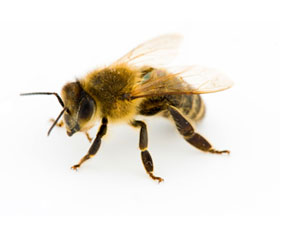 Bees are flying insects closely related to wasps and ants. They have 6 legs (3 each side of thorax), hairs and pollen sacks for collecting pollen. They have 3 body parts - head, thorax (chest), abdomen (has wax glands for making wax in cells in hives).
Bees are flying insects closely related to wasps and ants. They have 6 legs (3 each side of thorax), hairs and pollen sacks for collecting pollen. They have 3 body parts - head, thorax (chest), abdomen (has wax glands for making wax in cells in hives).
They have wings, antennae for feeling/sensing, and eyes on sides of their head, their straw like tongue is for sucking up nectar feeding on pollen. Most pollen is used as food for larvae. Bees are workers, busy pollinating flowering plants.
Bees live in colonies, each colony having a single queen together with workers, and at some stage of the colony drones, when humans provide a home for the colony it is called a hive.
Bees can make their colonies in wall cavities, ceiling spaces and chimneys, when this occurs it is important to get the colony removed.
If a bee keeper is not able to remove the colony (swarm) which is usually the case when the location is within parts of a building structure, the colony is destroyed with an insecticide dust, and if possible, any honeycomb removed.
Home owners should not attempt to remove or destroy any bees themselves, they are very dangerous and stings can be fatal. Do not spray them with anything, not even the garden hose. Leave them alone and seek expert help.
Call us now for a free quote on 8443 9636 or
Carpet Beetles
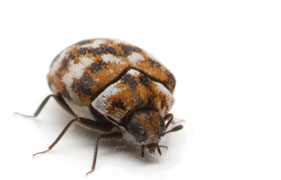 Carpet Beetles are approximately 3mm long.The most common Carpet Beetles are to be found attacking various fabrics of animal origin, as well as carpets, they can be found in woollen goods, fur, silk, upholstery and stuffed animals.
Carpet Beetles are approximately 3mm long.The most common Carpet Beetles are to be found attacking various fabrics of animal origin, as well as carpets, they can be found in woollen goods, fur, silk, upholstery and stuffed animals.
A Carpet Beetle infestation usually occurs in undisturbed areas i.e. below furniture or perimeter areas of carpet.
To control a Carpet Beetle infestation attention to thorough vacuuming of the affected areas followed by an application of residual insecticide spray is recommended. Insecticide dust is not effective for long as it is removed by vacuuming.
Care must be taken to ensure whatever product is used does not discolour or stain fabrics. As with most pest control issues it is best left to an Expert.
Call us now for a free quote on 8443 9636 or
Fleas
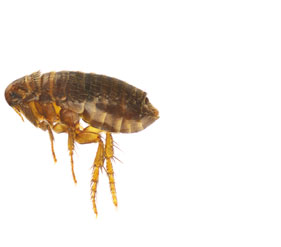 The main Flea species in domestic situations are: Dog flea, Cat flea, Oriental rat flea and human flea.These fleas have been known to transmit diseases among humans and some animals. Adult fleas vary in size, but are usually 1-2mm long, brown colour and have very thin bodies so they can move between the hairs of their animal hosts. Their piercing and sucking mouthparts are used for sourcing a blood meal from the host.
The main Flea species in domestic situations are: Dog flea, Cat flea, Oriental rat flea and human flea.These fleas have been known to transmit diseases among humans and some animals. Adult fleas vary in size, but are usually 1-2mm long, brown colour and have very thin bodies so they can move between the hairs of their animal hosts. Their piercing and sucking mouthparts are used for sourcing a blood meal from the host.
The adult female may lay hundreds of eggs in her lifetime, but usually four to eight eggs after each blood meal. The eggs are laid onto the animal and fall onto floors, ground and in sleeping and resting areas. Larvae are tiny and legless, with hairs on their body.
They feed on organic matter located in carpets and floor coverings as well as outside in lawns. When fully grown around 12-20 days, the larvae pupate into silken cocoons, within 7-10 days emerge as adults.
Breeding areas for Fleas can be reduced by washing floors regularly, vacuuming carpets including under the furniture and areas where animals rest, or carefully vacuuming the entire house. Heat treat the vacuum bag in the sun, always put the vacuum cleaner away fully empty.
Check animals (especially cats and dogs) either take them to a veterinary clinic or treat them with a registered pesticide for flea removal.
Control is also achieved by applying a registered surface spray, paying particular attention to cracks, crevices and wall joints, subfloor and some outside areas may also need attention. Repeat application of surface spray may be required to gain good control, and ongoing control of the pests on animals is advised and with products supplied by a veterinary clinic is essential.
Houses are often found to be infested with fleas upon a change of tenants. One tenant moved out, taking their cats and dogs with them, and another moves in with no pets. Fleas hatch out from the eggs which have lodged in carpets etc, and with no animals present to jump on, attack the human occupants instead, usually first upon the ankles and lower leg.
Complete residual spray treatment of floor coverings, skirtings, cracks crevices, outbuildings and grounds becomes necessary under such circumstances, and requires time to give full control, as the eggs continue hatching for some time.
Call us now for a free quote on 8443 9636 or
Rodents/Mice
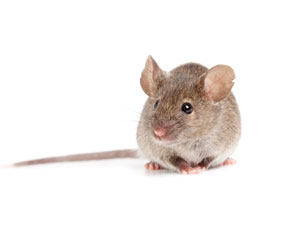 Mice
Mice
Within the large mammal group, rats and mice belong to the group known as Rodents. Rodents may live and nest within buildings indefinitely, provided they have access to food (perhaps water) and shelter. Mice and rats live in groups.
Outdoors they may nest in burrows adjacent waterways, under buildings etc, in trees, vines, garbage dumps, rubbish heaps and other places where food is readily available. Indoors they may construct nests in wall voids, in roof voids, under floors and even within stored foods. Mice and rats can be excellent climbers also, they can scale rough walls, pipework, trees, vines and along fences, they also have the ability to swim.
Rats and mice are also known to spread disease to humans by way of contamination of food or utensils with urine or faeces, Examples of this is Salmonella food poisoning. Control is achieved by a combination of baiting, denial of food sources, and closure of entry points to buildings.
Roof Rats and Rodents
The Roof Rats major population is in Australia and most countries around the World. The Adult Species of the Roof Rat is Grey to Black in Colour, and has a dark tail with smooth soft fur. Their eyes are large and prominent. Average weight is about 200gm, Length 15-22cm with a tail of 18-25cm, their snout is pointed, with large ears, nearly naked.
Senses: Poor, Colourblind, but they have extremely excellent Taste/Smell/Hearing and Touch. They are an agile and active climber and mainly nest in walls, attics, vines and trees.
LIFESPAN: 9-12 months.
As with mice, Control is achieved by a combination of baiting, denial of food sources, and closure of entry points to buildings
Call us now for a free quote on 8443 9636 or
